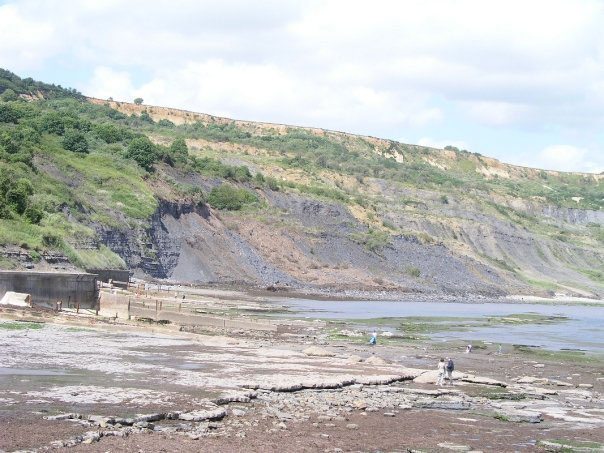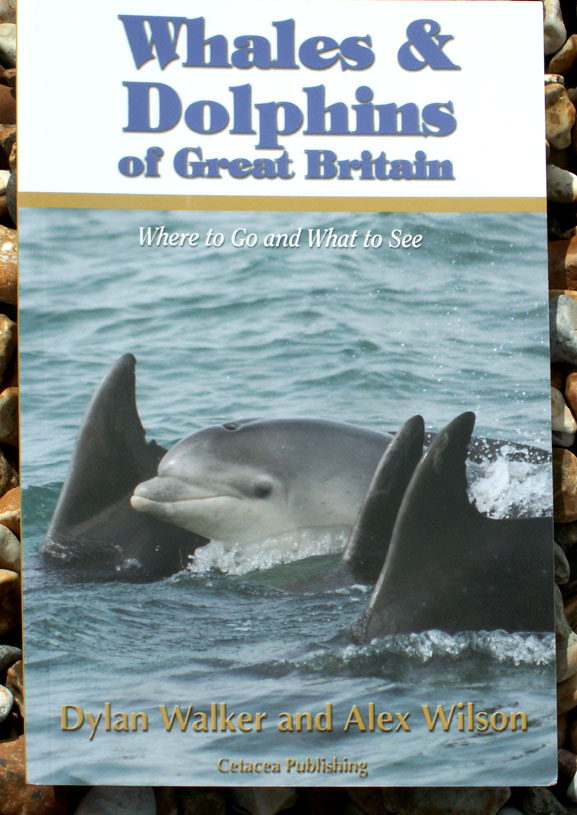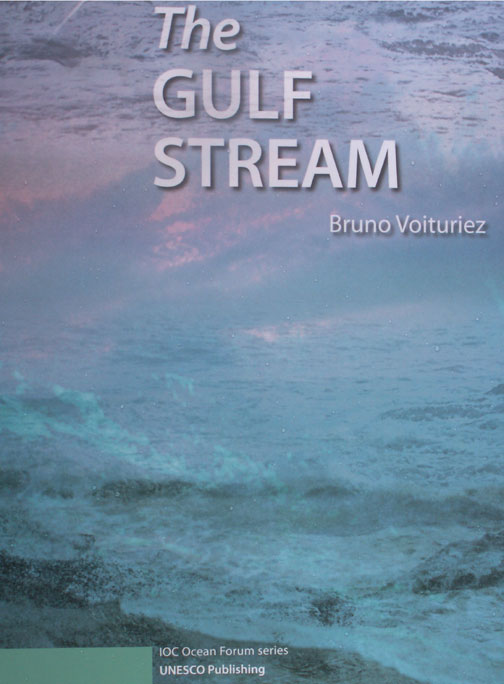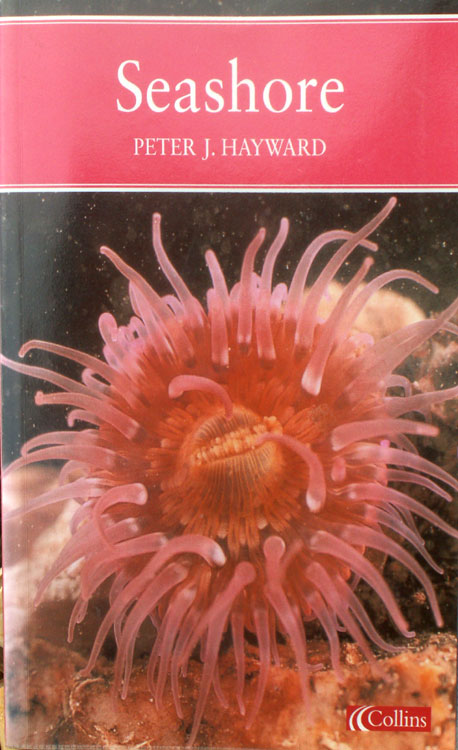-
|
Monthly
electronic news bulletin for the marine life of the NE Atlantic Oceans
including the seas and seashore around the British Isles.
The
bulletin is designed for Microsoft Explorer 4 and above using medium fonts
at a resolution of 800 x 600 and can be viewed satisfactorily at a resolution
of 1024 x 768.
Subscribe
and unsubscribe options are at the foot of this page.
|
|
If
you receive this bulletin as an EMail subscriber, you may find the best
way to view the file is on your hard disc in your directory of Incoming
EMails.
|
MARINE
LIFE NEWS
Reports
of marine wildlife from all around the British Isles, with pollution incidents
and conservation initiatives as they affect the flora and fauna of the
NE Atlantic Ocean.
-------------------------------------------------------------------------------------------------------------------------
21
July 2008
A
large male European Lobster,
Homarus
gammarus, weighing in at 5.88 kg (12 lb
15 oz) was captured by fisherman Jack
Baker and has found a home as a special exhibit
at the National
Marine Aquarium at Plymouth. It was one
of the largest lobsters captured in recent years and many lobster fishermen
will spend a lifetime without capturing such an enormous one.
BBC
News Video
Notes
on the sizes of Homarus gammarus
6 July
2008
A
large European Lobster,
Homarus
gammarus, weighing in at 4.25 kg (9.45 lb)
was caught on rod and line by angler Neil
Ridley off West Hoe Pier, Plymouth. It was
returned to the sea.
BMLSS
Lobsters
3 July
2008

Broad-billed
Swordfish
Photograph
by Colin Smith
(Amgueddfa
Cymru - National Museum Wales)
A Broad-billed
Swordfish,
Xiphias
gladius,
was discovered washed up dead on Barry
Island beach, Vale of Glamorgan, South Wales. It was carefully
examined by Dr Peter Howlett, (Curator of
Lower Vertebrates, National Museum, Wales)
who confirmed the identification and found it to be a young specimen 2.24
metres long and between 60 and 80 kg in weight. It had been dead
only a few days, but it had been scavenged by other creatures and it was
not possible to determine the cause of its death.
Full
Report
BMLSS
Swordfish Reports
29
June 2008
Another
huge Edible Crab,
Cancer
pagurus, was discovered and brought
ashore by Paul Worsley
diving in Lyme Bay,
Dorset. It was estimated to be 300 mm wide across the carapace and a crab
of this size would be the largest on record. (The
largest recorded specimen known was 285 mm wide.) Its huge size can be
verified by the photograph in the Western
Morning News but unfortunately the crab was eaten before a tape measure
could put on the shell and photographed to verify the crab as the largest
on record.
26
June 2008
A
huge Edible Crab,
Cancer
pagurus, was captured and brought
to the surface from a plastic barrel on the sea floor at Balaclava
Bay off Portland, Dorset. The male crab was not measured but estimated
to be about 30 cm wide across the carapace. It was found a home in Weymouth
Sea Life Centre. Both its massive claws were intact and bigger than
my hands.
Capture
and Report by Paul Martin
with
the help of companion diver Mary Harris
Dorset
Echo Report
BMLSS
Edible Crab
22
June 2008
An
injured Risso’s
Dolphin, Grampus griseus, was discovered
swimming in the River
Clyde, Glasgow, Scotland, and it is not expected to survive. This
is a deep water species.
Whales
& Dolphins in British Seas (Link)
FORUM
NEWS
Marine Wildlife
of the North-east Atlantic Ocean Mailing Groups
Marine
Wildlife of the North-east Atlantic Ocean
Yahoo
Group
New
Group: http://uk.groups.yahoo.com/group/Glaucus
With
the closure of Smart Groups at the end of November
2006 most of the 7500+ messages have been
filed at:
Marine
Wildlife of the North-east Atlantic Ocean Jiglu
http://www.Jiglu.com/spaces/glaucus/
Images
can be uploaded to flickr.
http://www.flickr.com/groups/glaucus/
Wet
Thumb (Marine Aquariology) Forum Link

------------------------------------------------------------------------------------------------------------------------
All
reports by Andy Horton
unless the credits are given
to
other observers or reporters.
Cornish
Marine Wildlife (Ray Dennis Records) 2005
|
| PICTURE
GALLERY
Each
month, at least one special marine image will be published from images
sent to the BMLSS. This
can be of the seashore, undersea world or any aspect of the marine natural
world, especially the underwater life, but not restricted to life beneath
the waves. Topical inclusions may be included instead of the most meritorious,
and images will be limited to the NE Atlantic Ocean and adjoining seas,
marine and seashore species and land and seascapes.
Snakelocks
Anemone
1 July
2008
WARNING
I was
badly stung all over my back and bottom by a Snakelocks
Anemone,
Anemonia viridis,
whilst in a rock pool at Dancing
Ledge in Dorset, part of the Purbeck Coastline in the south west of
England.
After
a long swim in the sea as well, I got out and immediately felt a rapid
burning sensation like my skin was on fire. The area bubbled up in patches,
very similar to a dense collection of nettle stings. Interestingly, the
stings on my bottom form a neat and rather unattractive line on the edge
of my bikini bottoms. There were other people in the water at the same
time but they had long shorts on or wet suits, so the stings couldn't penetrate.
I did hear from another swimmer that a little girl who was only wearing
a bikini like me, had also suffered an attack.
I took
the above photograph about ten minutes after getting out of the water.
The area remained very hot and very very tender for about two days. During
the following week it began to go down then it formed in red welts that
look like chronic eczema.
It's become itchy and inflamed and I started to use calamine lotion again
to soothe it.
Full
Report
Stings
from Snakelocks Anemones
Sting
Pain Index
Report
and Sting Photograph by Rosie
Sanders
flickr
BRITISH
MARINE LIFE GALLERY
------------------------------------------------------------------------------------------------------------------
Shore
Topography Series
The
name of the particular coast should be included and the grid reference,
if known. Print photographs can be included in Exhibitions
and on the BMLSS Web Sites and electronic publications. Electronic images
in *.jpg format
can also be considered for the web site. They should not exceed 250K in
size.

The
rockpool with the Snakelocks
Anemones
at
Dancing Ledge (see the species feature
above)
Photograph
by Rosie
Sanders
The
rock pool that was artificially created by a headmaster of a local boarding
school sometime in the early 20th century. It forms a perfect intertidal
swimming pool that attracts lots of families and bathers
----------------------------------------------------------------------------------------------------------

22
June 2008
Broad
Ledge, Lyme
Regis, after
a small landslip
Photograph
by Peter Glanvill
On
the evening of 6 May 2008,
a 400 metre (1,312 ft) section of land slipped onto the beach between Lyme
Regis and Charmouth. Local Police described the landslip as the "worst
for 100 years.
Lyme
Regis is famous for its Liassic
fossils as well as being an area
interesting for marine wildlife. For thousands of years the soft cliffs
at Lyme Regis have been crumbling in the seas revealing a rich seam of
fossils, notably ammonites
and in past some notable dinosaurs.
Blue
Lias is a sequence of layers of limestones
and shales, laid down in Jurassic times, between 195 and 200 million years
ago. In geology, it corresponds with the Hettangian stage of the Jurassic.
It is the lowest of the three divisions of the Lower Jurassic period and,
as such, is also given the name Lower Lias. It is a prevalent feature of
the cliffs around Lyme Regis and Charmouth, on the Jurassic Coast in Dorset,
where it exists in layers of limestone interspersed with softer clay.
Dark
& Deep (Diving & Caving) by Peter Glanvill
Lyme
Regis to Charmouth (Geology)
Lyme
Regis Museum and Mary Anning
Rockpooling
at Lyme Regis (BMLSS)
flickr
British
Coastal Topography
------------------------------------------------------------------------
First
enquiry by EMail to Glaucus@hotmail.com

-----------------------------------------------------------------------
Photographers
submitting pictures should indicate if they wish them to be considered
for inclusion as confirming permission takes work and time and can delay
publication of the news bulletins.

Click
on the album for more links (On-line link)
|
DIARY
In
chronological order, the most recent events are at the top of the page.
Events open to the public, free or for a nominal charge only are included.
Most Seminars need to be booked in advance.
11-15
November 2008
World Conference
on Marine Biodiversity
Valencia,
Spain
The
exploration of marine biodiversity: scientific and technological challenges
To
review the current understanding of marine biodiversity, its role in marine
ecosystem functioning and its socio-economic context
To
assess current and future threats and potential mitigation strategies for
conservation and regulation of marine resources
To
identify future research priorities
First
Announcement (Link)
Full
Details (Link)
-----------------------------------------
BIOSIS
Conference Calendar for Zoology
(Major
Link of all biological conferences around the world)
|
| PUBLIC
AQUARIA NEWS |
| Public
Aquaria List |
| CETACEAN
NEWS |
|
? What
to do if you find a stranded whale or dolphin ?
|
If
you find a LIVE stranded or injured whale or dolphin on the beach you must
send for help QUICKLY. A whale or dolphin stranding is an emergency and
the speed of response by a professional rescue team is perhaps the most
crucial factor in determining whether or not an animal can be returned
to the sea alive.
EMERGENCY
NUMBERS FOR LIVE CETACEAN STRANDINGS
|
ENGLAND
|
WALES
|
SCOTLAND
|
|
0300 1234 999
|
0300 1234 999
|
0131 339
0111
|
|
CORNWALL
|
JERSEY
|
GUERNSEY
|
|
0845 201
2626
|
01534 724331
|
00 44 1481
257261
|
LINK
TO THE STRANDINGS PAGE
|
PUBLICATIONS
&
WEB PAGES
-----------------------------------------------------------------------------------------------------------------------
BOOKS
PUBLICATIONS
NEW
BOOKS:
 |
Sharks
in British Seas
Richard
Peirce
138
pages, colour illustrations, line drawings, colour & b/w photos.
Lots
of newspaper reports.
Publisher:
Shark Cornwall
Softcover
| 2008 | £9.99
ISBN:
978-0-955869402
|
 Whales
& Dolphins Whales
& Dolphins
of
Great Britain
by
Dylan Walker and Alex Wilson
CETACEA
Publishing 2007
£11.95
ISBN-10:
0-9556144-0-6
ISBN-13:
978-0-9556144-0-8
If
you would like to see whales and dolphins in British waters, Whales and
Dolphins of Great Britain is the book for you! A comprehensive and easy-to-use
field guide to all of the regularly seen species, it also shows you how,
where, and when to go and see these spectacular marine mammals, with 38
boat operators and 16 outstanding land-based viewpoints listed. The text
is packed with information on how to book a trip; including the species
that are likely to be seen, how to get there, and what photographic opportunities
are available. If you love whales and dolphins and enjoy seeing the British
countryside, this book is a must – you never know when you might need it!
Whales
and Dolphins of Great Britain is the first in a series of regional whale
and dolphin watching guides being published by Cetacea Publishing.
CETACEA
Publishing, Nook Farmhouse, Ashby
Road, Shepshed, Loughborough, LE12 9BS. Telephone: 0845 388 3053. Fax:
0845 108 6386.
E-Mail:
info@cetaceapublishing.com. Website designed by de Wilson-Wildman LLP
BMLSS
Cetacean Book Reviews

The
Gulf Stream
by
Bruno Voituriez
Publisher:
UNESCO
ISBN:
92-3-103995-4
222
pages, figures, glossary, bibliography
The
Gulf Stream
Amid
contemporary scenarios of potential climatic catastrophes and global warming
that might be imagined to bring a new ice age, the powerful image of the
Gulf Stream rising from the Florida Straits and flowing to the north Atlantic
inevitably provokes questions about its ecological significance and whether
it might ever stop.
Coastal
Plankton
Photo Guide for
European Seas
by
Otto Larink & Wilfried Westheide
reviewed
by Wim van Egmond
 |
Seashore
(Collins
New Naturalist) (Paperback)
by
Peter Hayward
Collins
2004
ISBN:
0-00-220031-7
Amazon
Web Site |
Paperback.
Pp 288. Colour & b/w photographs, illustrations, charts, maps and bibliography.
Fine copy. "New Naturalist" Seashore is a comprehensive, authoritative
account of the natural history of the seashore.
BMLSS
General Guides
BMLSS
Advanced Guides
.
JOURNALS:
--------------------------------------------------------------------------------------------------------------------
WEB
SITES
Decision-making
in Marine Mammal
Rescue
and Rehabilitation
Eastern
English Channel Habitat Atlas for Marine Resource Management
is
available for download from
http://charm.canterbury.ac.uk/atlas/pge.htm
Encyclopaedia
of Marine Life of Britain and Ireland
http://www.habitas.org.uk/marinelife/index.html?item=about
Marine
Fauna of Norway
http://www.seawater.no/fauna/e_index.htm

WET
THUMB (Marine Aquariology)
EFORUM
PAGE
BMLSS:
Marine Life Articles in Publications (Link)
|
SOCIETY
INFORMATION
The
British Marine Life Study Society are responsible for producing the journal
GLAUCUS,
which is the first publication exploring the marine life of the seas surrounding
the British Isles available to the general public. In
future, I expect the publication to be in an electronic format.
-------------------------------------------------------------------------------------------------------------------------
EMail Address
 EMail
address for messages to the British Marine Life Study Society EMail
address for messages to the British Marine Life Study Society
----------------------------------------------------------------------------------------------
Membership 2008
Plans
have not yet been finalised for the publications and subscriptions for
year 2008. Back copies of previous issues are still available.
|
|
Bulletin
Details
If
you receive this Bulletin direct from the British Marine Life Study Society
it will contain only hypertext and image (*.htm *.gif & *.jpg) files.
Recipients
can only unsubscribe if the Bulletin is received directly from the
BMLSS.
Permission
is granted to forward the Bulletin on unaltered. However, you will have
to include the images separately.
Subscribe/Unsubcribe
http://groups.yahoo.com/group/BMLSS-Torpedo
To
save download times, only new images are included with each Bulletin.
The
Bulletin is designed to be viewed on Internet Explorer using medium fonts
at
a resolution of 800 x 600.
Viewing
should be possible on Netscape and other browsers. |
|
Printing
the two column version of Torpedo (from issue 28)
These
pages are not designed for the default settings on the Page Set-ups of
your browser. I recommend viewing in Microscope Internet Explorer 6 and
altering the right and left hand columns in the Page Set-up menu to 9 mm
(from 19 mm).
The
page set-up can also be amended in Netscape Composer and other web page
editors, and this has the advantage of enabling the specified number of
pages to be printed and the information about the file (name, path, date)
to be deleted.
Some
of the images may not display if you have changed your directory for downloaded
files. The images may also not display properly if your settings on your
EMail software do not allow you do this automatically. When received in
Pegasus the format is changed slightly, but the bulletin is still readable.
|
---------------------------------------------------------------------------------------------------------------------------------
Compiled
on Netscape Composer 4.7 and other programs
|

